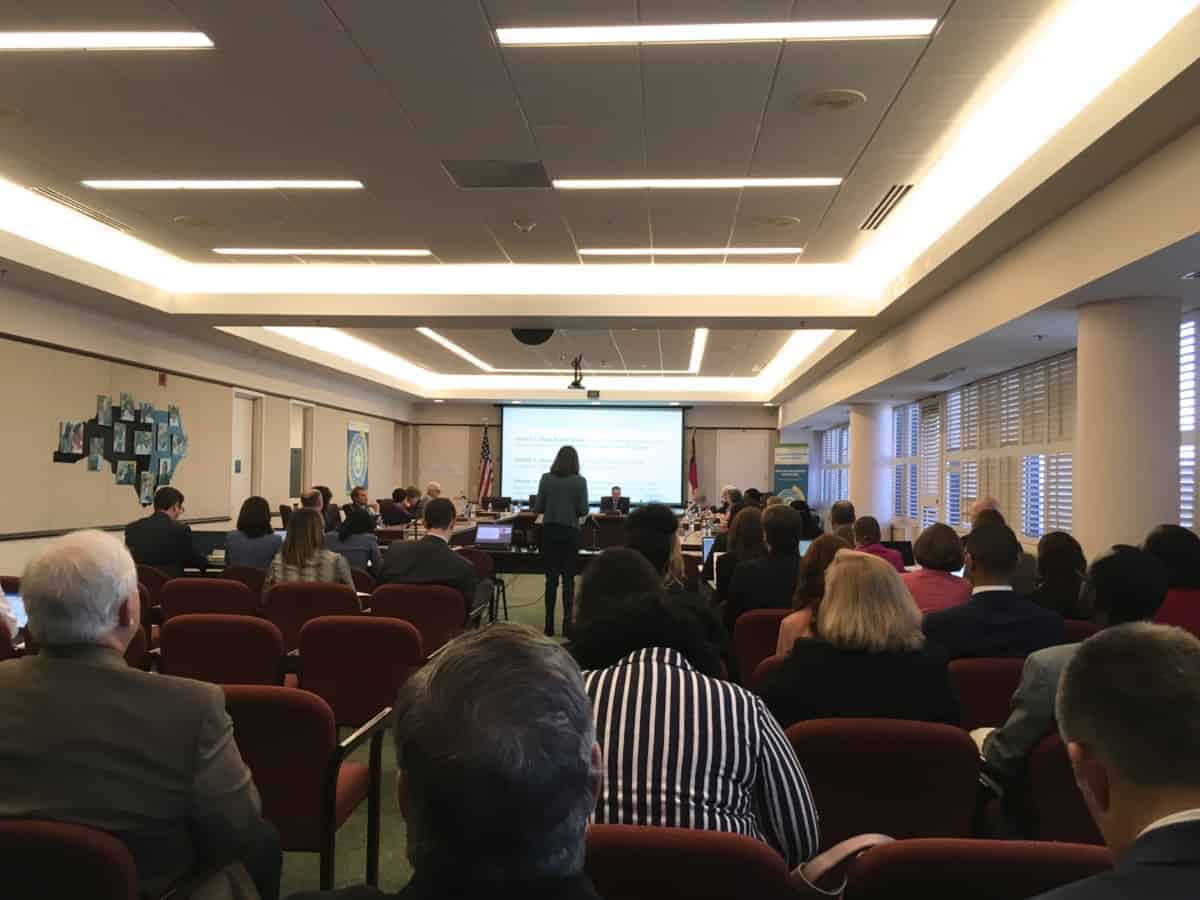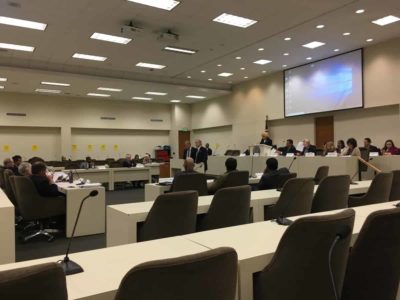There was a lot of education talk last week and not a lot of action. Discussions were had, issues analyzed, bills filed, reports approved — this is a roundup of a variety of items that didn’t really go anywhere last week but have the opportunity to impact education sometime in the future. Let’s start with the State Board of Education.
State of Teaching report
The State Board of Education heard a report last week that is an annual event. It lays out how many teachers are leaving the state and why, amongst other things. The results of the report this year were perhaps best summed up by Tom Tomberlin, director of District Human Resources at the State Department of Public Instruction.
“What I think is remarkable about this report is how unremarkable it is,” he said. “The numbers aren’t changing.”
In the chart below, you’ll see that over the last three years, the rate of teachers either leaving the profession or leaving the state — called attrition — is relatively static. Mobility defines teachers who are moving between districts but staying in the state. It, too, is pretty steady.
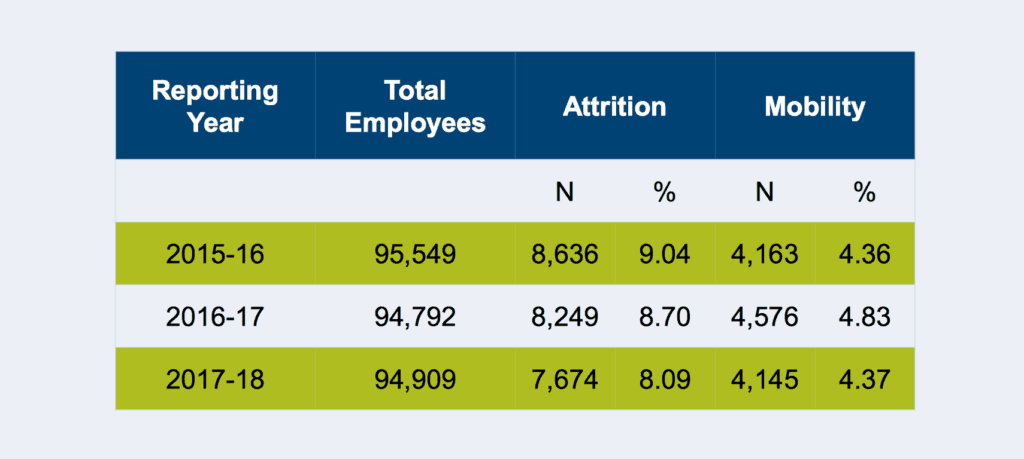

In the next chart, you see a breakdown of attrition by years of experience. You can see that teachers in the early years and late years are the most likely to leave, with the numbers really spiking at the end as teachers retire.
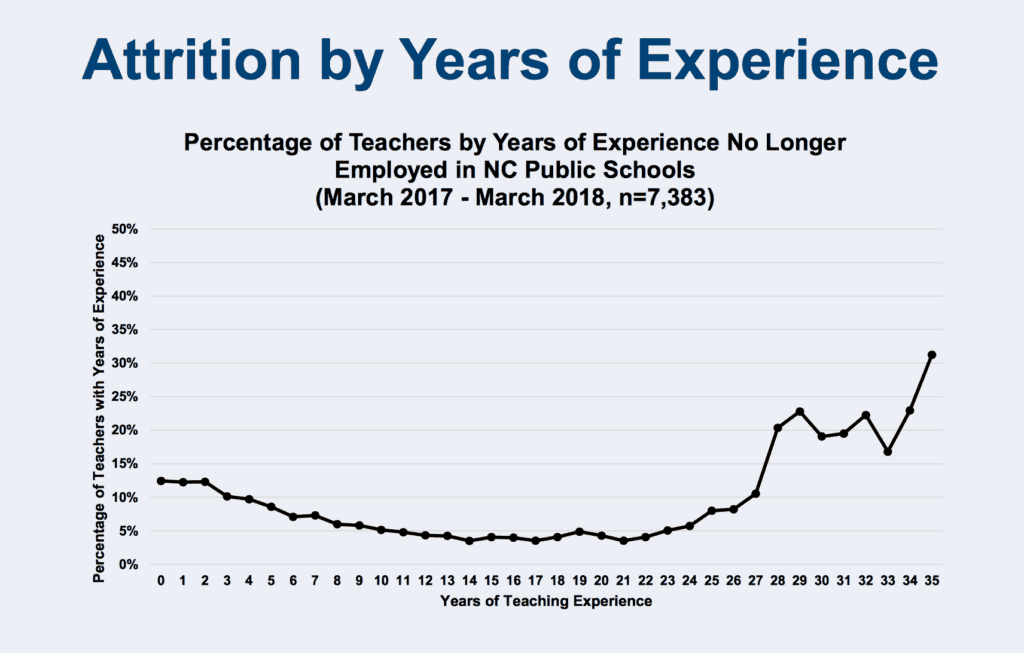

When Tomberlin broke down the numbers by type of teachers, the picture became a little more complicated. As you’ll see below, Teach for America teachers and lateral entry teachers have some interesting numbers. It’s important to note that Teacher for America and Visiting International Faculty (VIF), in the chart below, are programs that have an end date, and there isn’t necessarily the expectation that these people will stay in teaching beyond their contract. But the important percentage is the one that says “Before Contract Term.” Those are teachers that aren’t even finishing out their contract. Teach for America had the largest attrition rates of any type of teacher, with 26.86 percent leaving the profession before their contract was complete. Lateral entry teachers were also a concern, Tomberlin said, particularly because the rate of attrition in the early years of lateral entry teaching is relatively high.
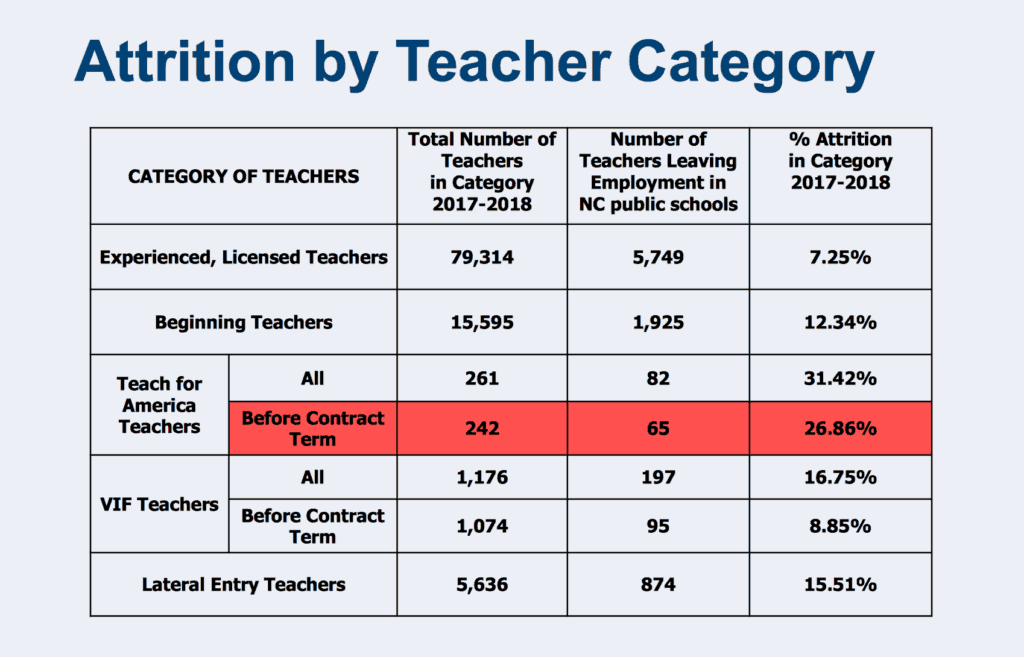

The takeaway Tomberlin gave and the Board took was that they have to watch out for beginning teachers. Teachers leaving as retirement approaches isn’t necessarily something the state can control. But they can strive to make beginning teachers more likely to stay in the profession.
Testing changes
Last month, Superintendent of Public Instruction Mark Johnson announced testing changes that would take place this year. Johnson has been an advocate for reducing overtesting since he came into office, and the steps he laid out are attempts to take concrete action on the topic.
In a press release, he announced the following changes to take place this year:
- Reducing the number of questions on tests
- Reducing the time students must sit for tests
- Changing testing policies to reduce the stress at schools around testing time
- Working with local leaders to reduce the number of locally required tests
- Pushing to eliminate tests not required by Washington, D.C.
- Giving students other ways to show progress if they have a bad test day
- Using the appropriate amount of technology as a tool for students and teachers to personalize learning and eliminate tests
At the State Board meeting last week, the Board heard an update on efforts to reduce overtesting.
You can see the details at that link, but some of the takeaways are that some tests will be shorter, there will be fewer questions, and some exams are going away.
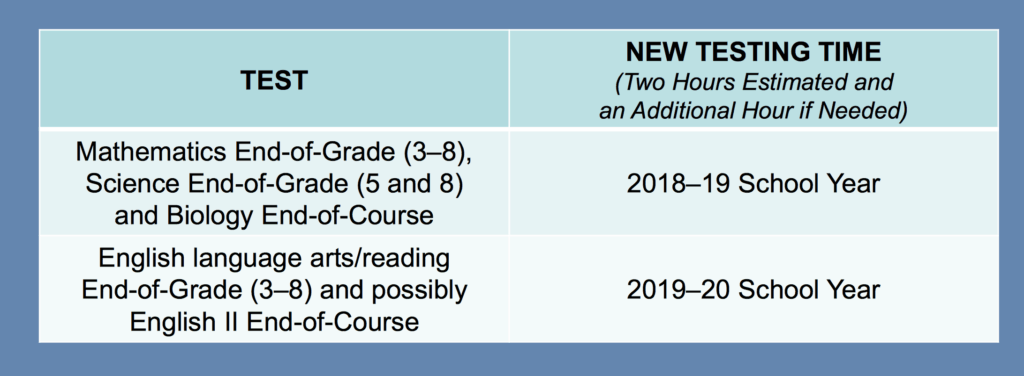

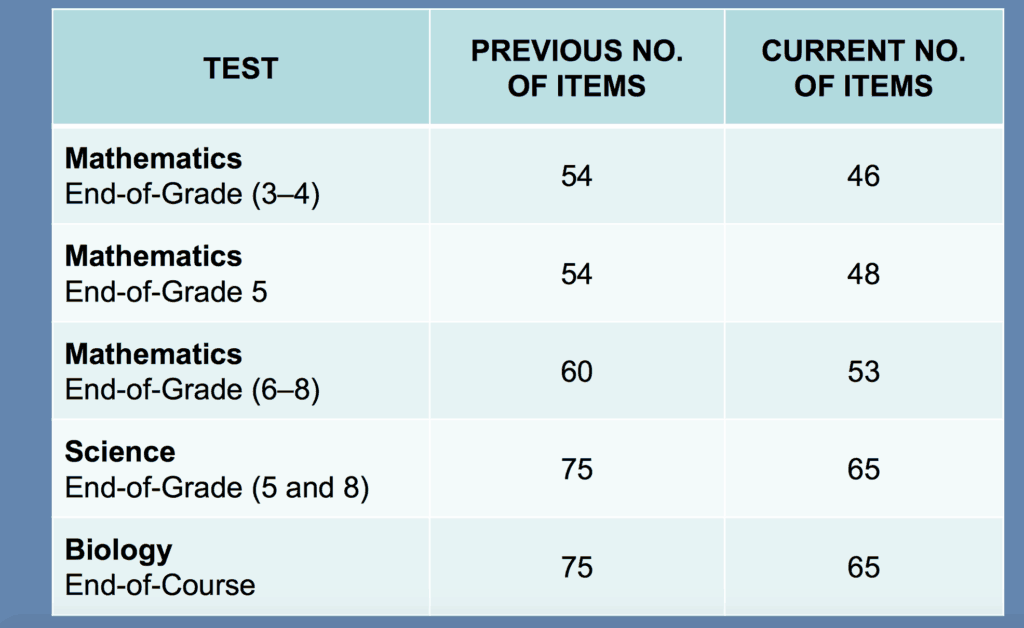

The state is also considering eliminating N.C. Finals exams in fourth grade science and social studies and fifth grade social studies, which could free a little more than 23,000 students from taking these tests.
Math teacher licensure test
The State Board has been discussing a math exam that teachers have to take for licensing requirements and concerns that when the state started using a new test, teachers weren’t faring so well. If they don’t pass, they can’t remain teachers. Additional analysis has shown that this may not necessarily be the case because policy changes around testing requirements obscured what was actually happening, but the issue has sparked a conversation around the tests teachers take to become licensed. The problem is that teachers that have proven effective in the classroom also sometimes don’t pass these licensing tests, which raises a question: are these tests a good indicator of future effectiveness in teaching?
This is a discussion that remains ongoing, with the State Board slated to make decisions in the near future on a possible math test change and the elimination of a multi-subject test.
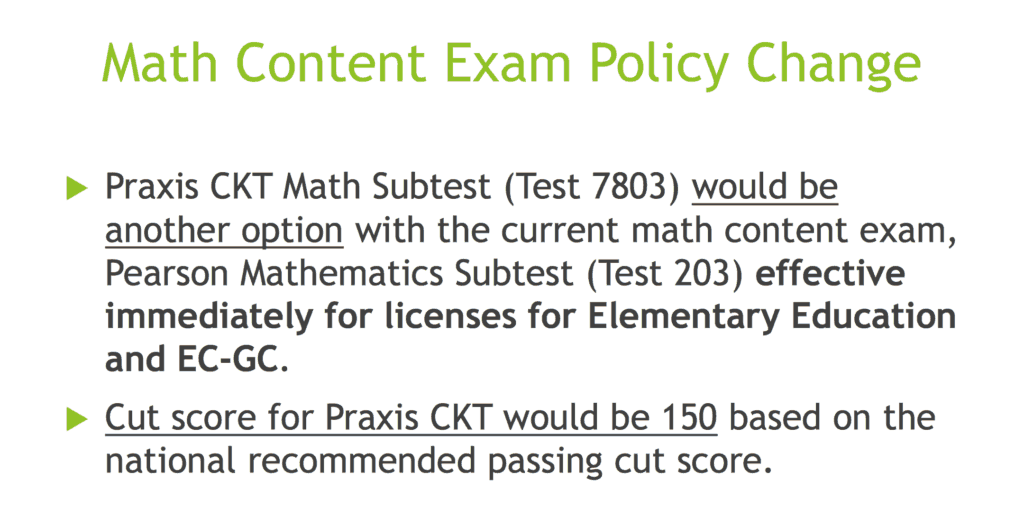

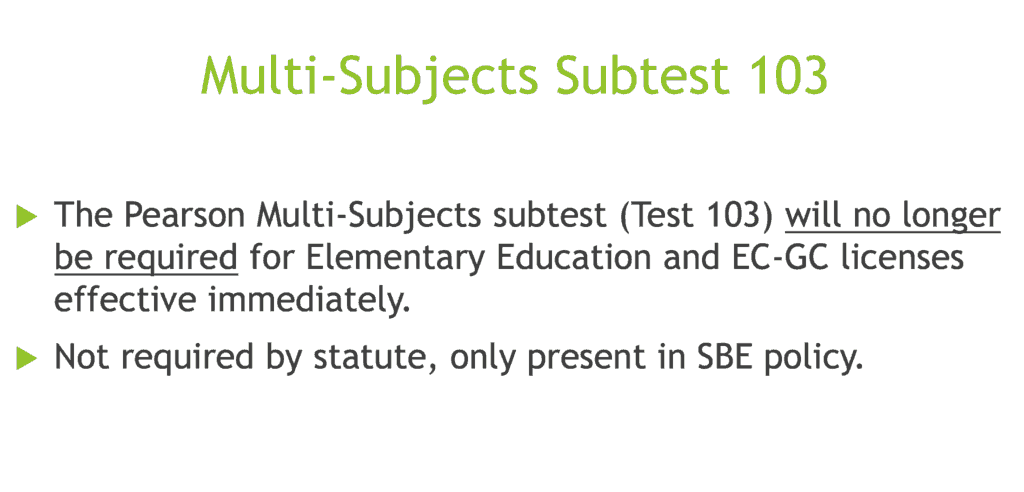

Special Committee on School Shootings report
The Governor’s Crime Commission created the Special Committee on School Shootings back in April in response to school shootings around the country. Last week, the Committee presented a report to Gov. Roy Cooper with the following recommendations:
- More School Resource Officers (SROs) in schools.
- Enhanced mental health training for SROs.
- Train SROs to teach schools how to respond to an active shooter crisis.
- Require vulnerability assessments of schools to identify ways to make school buildings safer, including placement and use of security cameras and alarm systems.
- Require local schools, law enforcement and emergency responders to work together on active shooter drills.
- Support multi-disciplinary threat assessment teams (including SROs or law enforcement) to meet regularly, share information and discuss possible threats to school safety.
- A statewide tip line or application for reporting threats to schools.
- Improve data collected on incidents of school violence.
- Fund the Governor’s budget requests for more mental health personnel and training for schools.
- Train law enforcement and educators to communicate more effectively about school threats.
- Develop Gun Violence Protection Orders to provide a legal process to temporarily remove guns from a dangerous individual.
Calendar flexibility
We covered a House education committee last week that discussed, though made no decisions, on two bills that would give school calendar flexibility to some local districts in the state. As the week progressed, school calendar flexibility bills continued to be filed nearly every day, indicating that this will be an issue debated this session. Stay tuned as we keep our eye on what’s happening with this issue.
Restoring master’s pay
There was some excitement last week over a bill filed that would restore master’s pay for some teachers. Teachers used to get an additional salary bump if they had a master’s degree, but it was eliminated in 2013. Democrats have long supported restoring master’s pay for teachers, but with Republicans in control, it seemed unlikely. The excitement last week stems from the fact that the bill was filed by two Republicans and two other Republican co-sponsors signed on to it, as well as a number of Democrats. That indicates some bipartisan support, which means it could have more legs than if it was solely a proposition by Democrats. But it’s important to keep in mind that this bill has not been heard in any committees or discussed publicly among a larger crowd of lawmakers. So any excitement should be tempered by the essential truism of the General Assembly: anything can happen.
